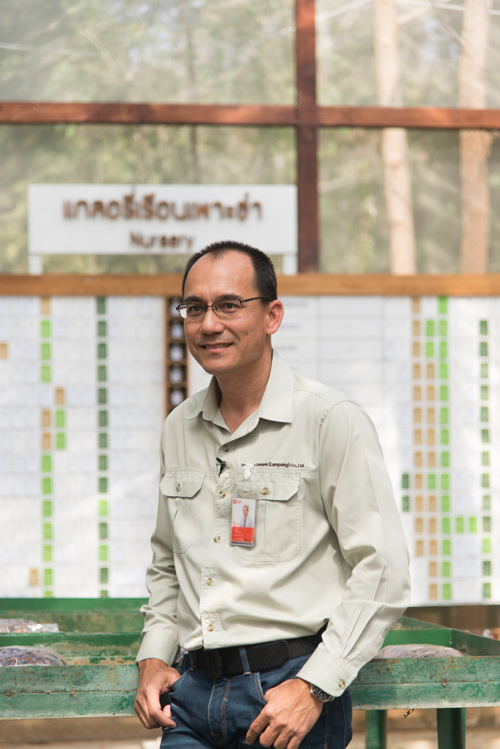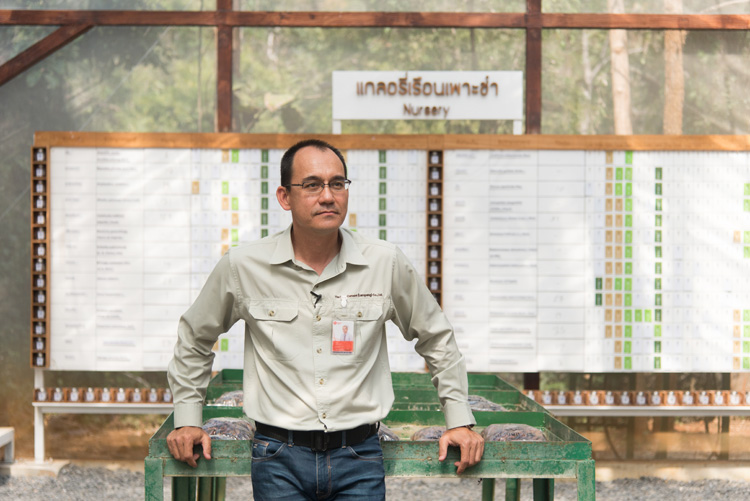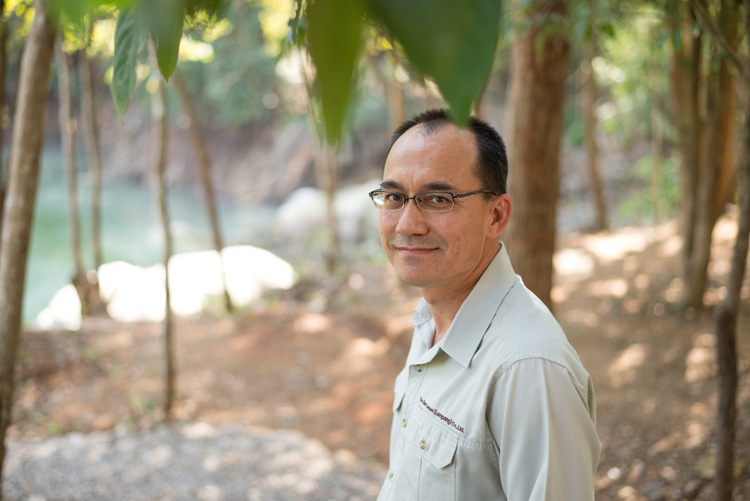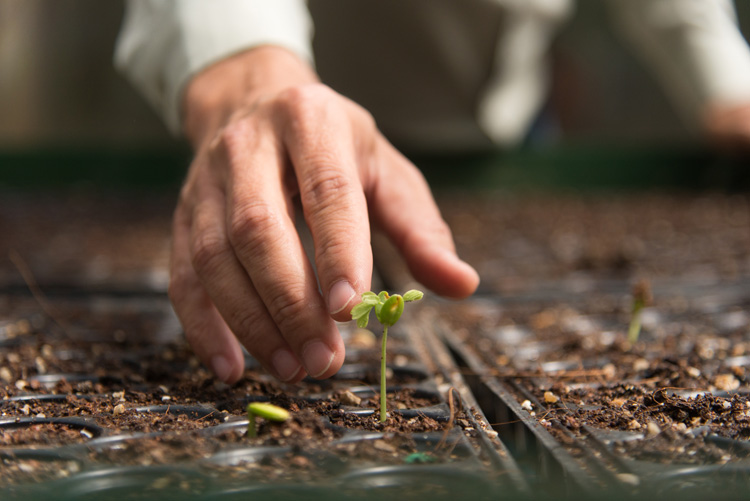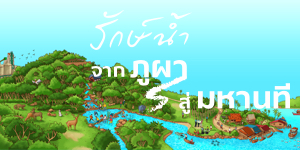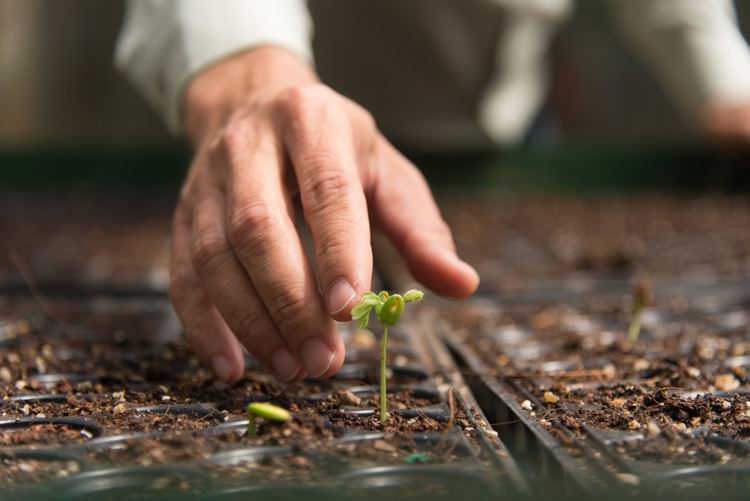
Reviving Nature Together: Learning, Implementing and Passing on Knowledge
Cement plants would conjure up the image of dust in the midst of hot weather, however, as soon as our car entered the gates of The Siam Cement (Lampang), what we saw were lush large and small trees lining both sides of the road.
For the general public, industrial plants are on the opposite side of environmental care, but for The SCG (Lampang), SCG’s 5th industrial plant in the country, a different story is told. “When we established the plant, Tawee Butsuntorn, Executive Vice President of SCG at the time declared that wherever our plant lies, the forests must be green, meaning that we need to care for nature and operate sustainably with the surrounding environment. The people here at SCG (Lampang) believe that with good management, the industrial plant can operate alongside nature,” said Bavorn Wannasri, Community Relations and Nature Preservation Manager, SCG (Lampang) regarding the reason why the plant is full of trees.
Bavorn was one of the first pioneers of SCG (Lampang). When he arrived, the grounds were vast dry lands. In the following 23 years from then, he dedicated his energy to working with many organizations to bring back the abundant forests.
From Forests to Check Dams
One of his first tasks was to restore over 1,100 rai of forest area in and around the grounds. Bavorn said that catastrophe struck when forest fires burnt down all the trees that were planted. “Finally, one of our former CEO and a director of our company, Paron Israsena na Ayudhya suggested that we should study the works of His Majesty King Bhumibol Adulyadej at the Huay Hong Krai Educational Center about check dams. After we took that field trip, we brought back the knowledge and started building check dams in SCG (Lampang) from 2003 onwards.”
“After we built the dams, we saw changes in these areas. Wherever check dams are located, there is humidity, greenery, and the soil on both sides of the streams was fertile. Trees and creatures such as butterflies and insects flourished. We saw many different types of birds and traces of forest animals.”
A tangible success following the building of check dams in the areas surrounding SCG (Lampang) was the significantly lower frequency of wildfires, from formerly 200 to 300 times per year down to only 4 to 6 times per year. Moreover, from 2012 to 2015 there were no wildfires in the forest areas surrounding the plant. The water also brought diverse species of plants and animals to the area, from 78 types of birds in1992 to 169 types of birds in 2017, while 22 types of mammals, 26 types of reptiles and 11 types of amphibians were also found.
In 2007, after experiencing success from the project, SCG announced that the company will carry out its “SCG Raknam for the Future” project by supporting communities to build 10,000 check dams within three years, from 2007 to 2009. “We started from solving our own issues, the dry spells and the wildfires, when the project is a success, we will expand our efforts to the surrounding communities,” concluded Bavorn about the background of SCG’s project to build check dams with local communities.
From Check Dams to Communities
Since the beginning of the project in 2007, over 56,000 small and large check dams were built in Lampang and nearby provinces, returning abundance to the forests while communities had enough water to use.
After restoring forests and water resources, economic benefits followed: locals can gather plants in the forests and open homestays that promote agricultural tourism. Moreover, the community also established new activities from setting up water supplies on the hillside, establishing social enterprises, carrying out organic farming, all of which created more income and a better quality of life for locals in the community.
Bavorn said that, “The forest situation in Lampang has improved significantly, we’re working with several organizations, especially the Lampang Forest Network in many areas and working in both large and small scales. Today, Lampang is the province with the highest number of registered community forests in the Thailand. Communities also care for the forests, build dams and perform wildfire control.”
He added that working with communities is not an easy task, and he had to try numerous times to find a way that leads to the goal. Most importantly, he had to constantly learn and experiment by himself. However, the most difficult thing was promoting a sense of ownership for the locals in the check dams that they built, because without a sense of ownership, sustainability will not be achieved.
“Initially, we sought for many methods, and we studied His Majesty King Bhumibol Adulyadej’s teachings about implosion and we learnt about harmony, understanding, reach and development, but we were at a lost about the path to take. Then, we started working with a group of NGOs when we gained further knowledge to adapt to other areas.”
In conclusion, Bavorn said that theories provide the method, then came learning from others who are more knowledgeable and more experienced, and the last step was to do it on your own, as doing it with your own hands is where knowledge and experience will be gained. The heart of development is the cooperation for multiple parties: communities, different organizations and the SCG team. Bavorn also emphasized that he could not have done the work alone.
“We worked together to develop the area and adapted suitable knowledge to the local community. Without the locals and other organizations, success would not have happened.”
Raknam…From the mountains to the mighty rivers
To continue the success of developing sustainability in water management, Bavorn said that SCG is working on water management of the entire system of the water flow, from upstream, midstream, to downstream. “All of these projects are managed by communities with SCG acting as a coach. We are determined to create sustainability in the communities and ultimately, successful communities will become a learning center for others that are facing similar problems and adapt from their solutions,” said Bavorn.
“Raknam…From the mountains to the mighty rivers” project is a pilot project to manage water resources that Bavorn mentioned earlier. Apart from helping communities build 100,000 check dams by 2020, SCG has worked with locals to dig water ponds that will reserve water supply and also set up the system for water retention areas or Kam Ling to distribute water supplies in lowlands, as well of taking care of downstream areas by creating Fish Homes for fish and small sea creatures to dwell.
Here at SCG (Lampang), Bavorn said that as manager of community relations and nature preservation, he is working with 44 communities that will increase to 72 communities within 2018. “We do have a large team and we have been working with over tens of thousands of people and we are ready to spread the knowledge that we have.”
Bavorn said that apart from the continuous support from the management and colleagues at SCG, the key for SCG’s success in bringing back the forest as well as gathering and passing on knowledge about water management to communities across the country is learning by doing and involving locals. He has always kept these things in mind to keep the projects sustainable. “Forest restoration is the main priority for locals who own the forest. Other organizations are coaches that help strengthen the community to have more skills and expertise. However, communities must solve their own problems, and when they have achieved their goals, they will maintain their goal by themselves which is considered sustainability.
Courtesy of a day magazine
